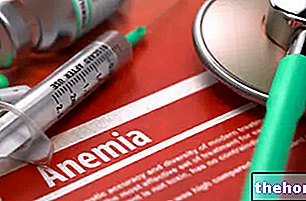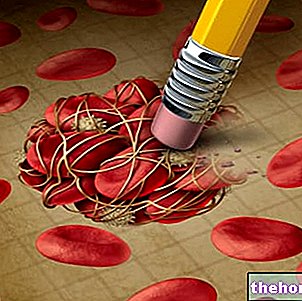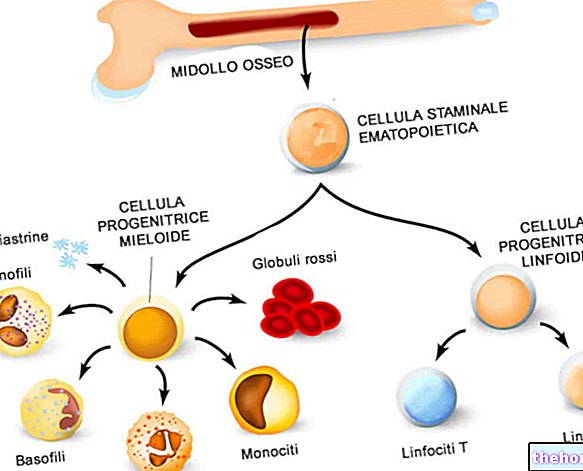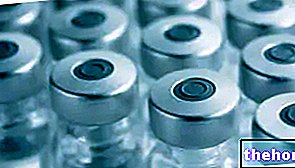
Implemented by specialized medical professionals, thrombolysis involves the administration of particular drugs, called fibrinolytics (or thrombolytics), and an X-ray instrumentation to observe the outcome.
Thrombolysis is used when it is necessary to dissolve a thrombus or embolus responsible for conditions such as: deep vein thrombosis, myocardial infarction with ST segment elevation, ischemic stroke, acute peripheral ischemia and pulmonary embolism.
Thrombolysis presents some risks (including: haemorrhage, infection and allergic reaction to the drug used) and several contraindications.
Thrombolysis is effective in a considerable part of the patients treated.
Brief review of what is a Thrombus?
In medicine, a thrombus is any abnormal blood clot attached to the inner wall of an artery or vein.
Thrombi derive from unusual coagulative reactions, which may depend on various factors, including: tobacco smoke (smoking), hypercholesterolemia, overweight / obesity, stress, atherosclerosis, diabetes mellitus, sedentary lifestyle, some malignant tumors, some infectious diseases, pregnancy etc.
The presence of a thrombus in a blood vessel is dangerous, because it is an obstacle to the blood flow, sometimes in such a marked way as to block the circulation of the blood; thrombi are also dangerous, because they can break, giving rise to mobile fragments that can travel in the blood and get wedged into blood vessels even very far from the starting site.
Known by the name of embolism (while the fragments are called emboli), the latter phenomenon is one of the main causes of important medical conditions, such as obstructed coronary arteries, pulmonary embolism and stroke.
Blood clotting has platelets and so-called clotting factors as protagonists.
or venous, in order to:- Improve blood flow (or blood circulation), where there are impediments;
- Preventing damage to organs and tissues, which can result from blood deprivation (in particular, this is the case with blood clots in the arteries).
In the "myocardial infarction with ST segment elevation, the myocardium has not yet undergone necrosis (ie death), but is developing a lesion that will have this outcome, if no help is involved (and, in this case, if it is not applied a treatment such as thrombolysis).

- Deep vein thrombosis. It is the pathological condition that results from the formation of a thrombus in a deep vein of the human body.
With a preference for the venous system of the lower limbs, deep vein thrombosis is very dangerous, because it blocks the blood flow along the involved vein and / or gives rise to emboli which, returning to the heart through the blood, can give rise to episodes of pulmonary embolism.
To cause / favor deep vein thrombosis are factors such as: clothing that is too tight, old age, maintaining a static position for long periods of time, obesity, use of the contraceptive pill, genetic predisposition to thrombotic phenomena, sedentary lifestyle and smoking. - Ischemic stroke. In medicine, the term "stroke" and its synonyms "stroke", "cerebral infarction" and "stroke"indicate the death (or necrosis), due to lack of blood supply, of a" more or less extensive area of the brain.
The ischemic stroke is a particular type of stroke, in which the lack of blood supply to the brain is the result of severe narrowing or total occlusion of an artery of the encephalic circulatory system.
Representing 85% of stroke cases, ischemic stroke can be thrombotic or embolic; it is thrombotic, when the vessel narrowing / occlusion depends on a thrombus, while it is embolic, when the vessel narrowing / occlusion depends on an embolus. - Pulmonary embolism. It is the medical condition, characterized by the obstruction of one of the pulmonary arteries, ie the blood vessels responsible for transporting deoxygenated blood from the right ventricle of the heart to the lungs, with the aim of oxygenating it.
Pulmonary embolism represents a very dangerous pathological state for those affected, as it drastically affects the vital process of oxygenation of the blood in the lungs.
The main cause of pulmonary embolism subject to thrombolysis is deep vein thrombosis. - Acute peripheral ischemia. Also known as acute limb ischemia, it is the sudden and sudden reduction of blood flow ("acute ischemia") within the arterial vascular network present at the extremities of the human body ("peripheral").
With a particular predilection for the lower limbs, acute peripheral ischemia can be thrombotic (when it depends on a thrombus) or embolic (when it depends on an embolus).

If he opts for the simple intravenous injection, he uses a small catheter, which he inserts into a venous access point convenient for the injection maneuver (eg arm vein); if, on the other hand, he opts for the infusion in the exact point where the thrombus or target embolus resides, he uses a long catheter, which introduces into the vascular system and leads to the desired point.
Did you know that ...
For conditions such as stroke, ST segment elevation myocardial infarction and pulmonary embolism, thrombolysis must occur within a certain amount of time (typically 2-3 hours) from impaired blood flow. part of the thrombus or thrombus, otherwise drug administration is ineffective.
Medicines: what are they?
Thrombolysis involves the use of fibrinolytic drugs (or thrombolytic agents).
The fibrinolytics most frequently used in conjunction with thrombolytic therapy are:
- Streptokinase;
- L "anestreplasi;
- The tenecteplasi;
- The reteplase;
- L "urokinase;
- Recombinant tissue plasminogen activators (eg, alteplase).
HOW DO FIBRINOLYTIC DRUGS WORK?
The process of blood coagulation, which is triggered for example by a skin wound, involves numerous proteins; among these, fibrin stands out, which, forming a sort of network, has the task of trapping the platelets and generating the clot that will block the leakage of blood.
During normal coagulation, fibrin is finely controlled in its action, in the sense that, once a clot is formed, a system intervenes that blocks its production; if this were not the case, there would be the formation of abnormal blood clots, ie the generation of thrombus.

Fibrinolytic drugs act through the activation of plasminogen in plasmin, which is the protein specifically assigned, during a coagulation process, to degrade fibrin, when the latter is no longer needed.
Simplifying as much as possible, thrombolysis drugs work by activating the human body protein, which intervenes when blood clotting needs to be stopped.
The term "fibrinolytic" comes from the word "fibrinolysis", in which "lysis" means breakdown / destruction, while "fibrin" refers to fibrin.
Therefore, "fibrinolysis" and derivative adjectives, such as "fibrinolytic", literally mean "destruction of fibrin".
How long does thrombolysis last?
Thrombolysis can last a few hours if the thrombus or embolus to be dissolved is small in size, or several days if the thrombus or embolus to be dissolved is large.
In essence, therefore, the size of the dangerous blood clot affects the duration of thrombolysis: the larger the latter, the longer the administration times of the fibrinolytic drug.
Who performs thrombolysis?
Thrombolysis is a drug treatment in which several medical specialists are prepared, including:
- Interventional radiologists;
- Vascular surgeons;
- Cardiologists;
- Interventional neuroradiologists;
- Neurosurgeons.
Currently, thrombolysis implementation and monitoring techniques ensure that thrombolysis proceeds safely. Therefore, in general, it is very rare to observe the above complications.
(or blood thinner);Furthermore, thrombolysis is not suitable for pregnant women and very old people.























-nelle-carni-di-maiale.jpg)




